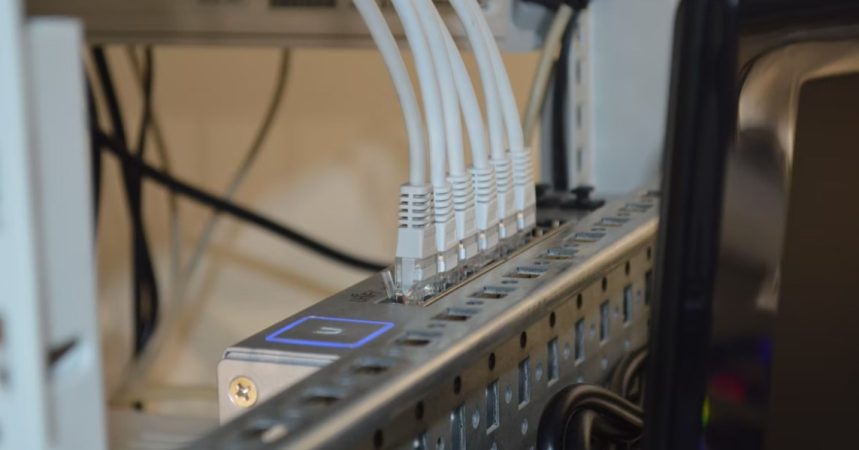
The kind of broadband connection is one of the most significant variables to consider when selecting an internet service.
Internet service providers offer various wireless services in different locations based on the network’s capabilities.
The three fundamental types of broadband service providers are Digital Subscriber Lines, Cable modems, and Fiber-optic networks.
So, if all three major types of broadband connections are accessible in your location, you may select one based on your needs. Once you have an internet connection, you can download unlimited movies and music from thenewpiratebay.
What Is A Broadband Connection?
Broadband is a high-speed broadband connection that allows you to access more resources on the internet. That is continual internet access.
It sends internet traffic through a regular phone connection. It was formerly used as a dial-up service, but it does not have the speed that we presently have. Copper and fiber are the two most common forms of residential broadband networks.
An ISP, Internet Service Provider, or even a WiFi provider creates a link that allows the consumer to access the digital world by supplying the essential equipment and technology.
The majority of internet service providers own and operate their own services. Nonetheless, this is a costly and challenging course to follow.
How To Select The Best Data Pack For Your Home?
Typically, the cost of internet services and the speed of internet bundles are intimately related. Nonetheless, some ISPs maintain the worth of internet services abnormally exaggerated due to the brand name.
Even though there are many internet service providers on the market, users should only look for internet service providers who offer high-speed internet connections at a fair price.
Step 1: Identify The Internet’s Type
The kind of broadband connection is one of the most significant variables to consider when selecting an internet service.
Internet service providers offer various wireless services in different locations based on the network’s capabilities.
The three fundamental types of broadband service providers are Digital Subscriber Lines (DSL), Cable modems, and Fiber-optic networks.
So, if all three major types of broadband connections are accessible in your location, you may select one based on your needs.
Step 2: Look For The Service Provider In Your Locality
The second step in choosing an internet provider is determining what is available in your area.
Each service provider is not available in every area. As coverage regions differ from provider to service, your selections would be limited to the carriers who provide service in your area immediately away.
Prices, speeds, special deals, and product lineups vary depending on the region. So what you see for sale on the internet is not necessarily what you get.
Before choosing a service, always check its availability in your area. Similarly, various carriers have different pricing methods for different places, so be prepared to pay more—or less—after a relocation.
Step 3: Evaluate The Speed And Price
You want an internet subscription that offers appropriate speeds, dependable delivery, and a decent monthly data limit—all at an affordable price.
After you’ve narrowed down your options, analyze the providers in your area to find which one is the best fit for you.
Both internet service providers have distinct specialties, and it is crucial to select the one that best meets your demands. For example, few carriers provide superfast speeds, while some offer simpler, less costly services.
Many service providers have bandwidth restrictions, limiting the amount of internet you may use each month, while others provide unlimited data.
Step 4: Determine The Bandwidth
You’ll need an internet connection with adequate speed to do all of your regular Wi-Fi activities.
You want fast broadband, but not too fast, or you’ll end up paying for connectivity that you won’t use. For example, streaming 1080p material requires roughly 5 Mbps for best output, whereas 4K requires download speeds of at least 25 Mbps.
The greater the number of computers connected to your home network, the greater the amount of data utilized.
You’ll want to provide some wiggle area so that everyone may access the Wi-Fi simultaneously. These devices, especially Bluetooth security cameras that continuously send data, will quickly consume your bandwidth.
Step 5: Review The Limitations
When you’re in the process of switching from one internet network to another, you may double-check to see whether you’re already under a service contract and what the terms of the contract are.
Don’t expect to be able to avoid paying these fees either. Many providers are stringent in their application, but you should still give it a shot.
In addition to paying these additional fees, you will be individually obligated to return the obsolete equipment, such as wireless routers and cable modems.
Typically, this is as simple as getting them to a predetermined drop-off site, but each service has its own set of rules.
Final Note
As so many online enterprises are on the market giving data packs, competition has increased substantially.
All ISPs have implemented various rules that give additional benefits, such as a free link setup and a free phone box.
Furthermore, internet service providers sell memberships to many OTT sites through half-yearly and annual broadband contracts.
Therefore, if you have further queries, you can ask us in the comment box below.

Taylor is a freelance SEO copywriter and blogger. His areas of expertise include technology, pop culture, and marketing.














![How to Watch UFC 303 Live Stream Free [Updated 2024] UFC 259 Live Stream Free](https://techsmartest.com/wp-content/uploads/2022/03/UFC-259-Live-Stream-Free-100x70.jpg)

